Best Tips for Growing Chicory in Containers
Chicory, a versatile and nutritious plant, thrives in containers with the right care and attention. Growing chicory in containers can be a rewarding experience, offering fresh and flavorful leaves for culinary delights. To ensure successful cultivation, it's essential to follow some expert tips that will help you nurture your chicory plants to their full potential.
When it comes to growing chicory in containers, choosing the right container is crucial. Opt for a container that provides ample space for chicory's long taproot to grow freely. Additionally, ensure the container has proper drainage to prevent waterlogging, which can lead to root rot and other issues that may hinder the plant's growth.
To create an optimal environment for your chicory plants, consider the growing conditions carefully. Chicory thrives in full sunlight, so place your containers in a sunny spot where they can receive at least 6-8 hours of sunlight daily. Use well-draining soil to prevent water retention and promote healthy root development. Regular watering is essential to keep the soil moist but not waterlogged.
Starting chicory seeds indoors in early spring gives them a head start before transplanting them into containers. Once the seedlings have developed a few true leaves, carefully transplant them into your chosen containers. This process helps ensure strong and healthy plants that will continue to thrive as they grow.
Proper watering and fertilizing are key to the success of your chicory plants. Water your chicory regularly, ensuring the soil remains consistently moist. Avoid overwatering, as this can lead to root problems. Fertilize your plants with a balanced liquid fertilizer every few weeks to provide them with essential nutrients for growth and development.
Monitoring your chicory plants for pests and diseases is essential to prevent infestations that can damage your crop. Keep an eye out for common pests like aphids and slugs, as well as diseases such as powdery mildew. Taking prompt action at the first sign of trouble can help protect your plants and ensure a healthy harvest.
Harvesting chicory leaves when they reach the desired size allows you to enjoy fresh, flavorful greens in your dishes. Store harvested leaves in the refrigerator for up to a week to maintain their freshness. Consider practicing cut-and-come-again harvesting, where you harvest outer leaves while allowing the inner leaves to continue growing for a continuous supply.
Companion planting with chicory can help maximize space in your containers and naturally deter pests. Consider planting chicory alongside companion plants like radishes, carrots, and onions to create a harmonious and beneficial growing environment. These companion plants can help repel pests and enhance the overall health of your chicory crop.
Exploring the culinary uses of chicory opens up a world of possibilities for incorporating this versatile plant into your dishes. From adding chicory leaves to salads and stir-fries to roasting chicory roots as a coffee substitute, there are numerous ways to enjoy the unique flavors and nutritional benefits of chicory in your cooking.

Choosing the Right Container
When it comes to growing chicory in containers, choosing the right container is crucial for the plant's successful development. The container you select plays a significant role in providing the necessary space for chicory's growth and ensuring proper drainage to prevent water-related issues. Opting for a container that is deep enough to accommodate chicory's long taproot is essential. This taproot allows the plant to access nutrients deep within the soil, promoting healthy growth and robust development.
Moreover, the container should have good drainage to prevent waterlogging, which can lead to root rot and other issues. Adequate drainage ensures that excess water can easily escape, maintaining the optimal moisture levels for chicory. Consider containers with drainage holes at the bottom or opt for self-watering containers that regulate moisture levels effectively.
Additionally, the size of the container is a crucial factor to consider when choosing the right one for growing chicory. A larger container provides more room for the plant's roots to spread out and access nutrients, resulting in healthier and more productive chicory plants. However, ensure that the container is still manageable and fits within your available space, making it easier to care for and maintain.

Optimal Growing Conditions
When it comes to growing chicory in containers, providing optimal growing conditions is crucial for the plant's health and productivity. Chicory thrives in full sunlight, so make sure to place your container in a sunny spot where it can receive at least 6-8 hours of direct sunlight daily. This will ensure that the plant can photosynthesize efficiently and produce robust leaves.
In terms of soil, chicory prefers well-draining soil that is rich in organic matter. A good potting mix with added compost or perlite can provide the necessary nutrients and drainage for chicory to flourish. Ensure that the container has adequate drainage holes to prevent waterlogging, as chicory does not tolerate standing water well.
When it comes to watering, chicory plants require regular moisture to support their growth. Keep the soil consistently moist, but be cautious not to overwater, as this can lead to root rot. A simple way to check if your chicory needs watering is to insert your finger into the soil - if it feels dry about an inch below the surface, it's time to water.
Additionally, fertilizing chicory with a balanced liquid fertilizer every few weeks can provide the plant with essential nutrients for healthy development. Avoid over-fertilizing, as this can lead to excessive leaf growth at the expense of flavor and nutritional value.
By creating these optimal growing conditions for your chicory plants, you can ensure a bountiful harvest of nutritious and flavorful leaves for your culinary creations.
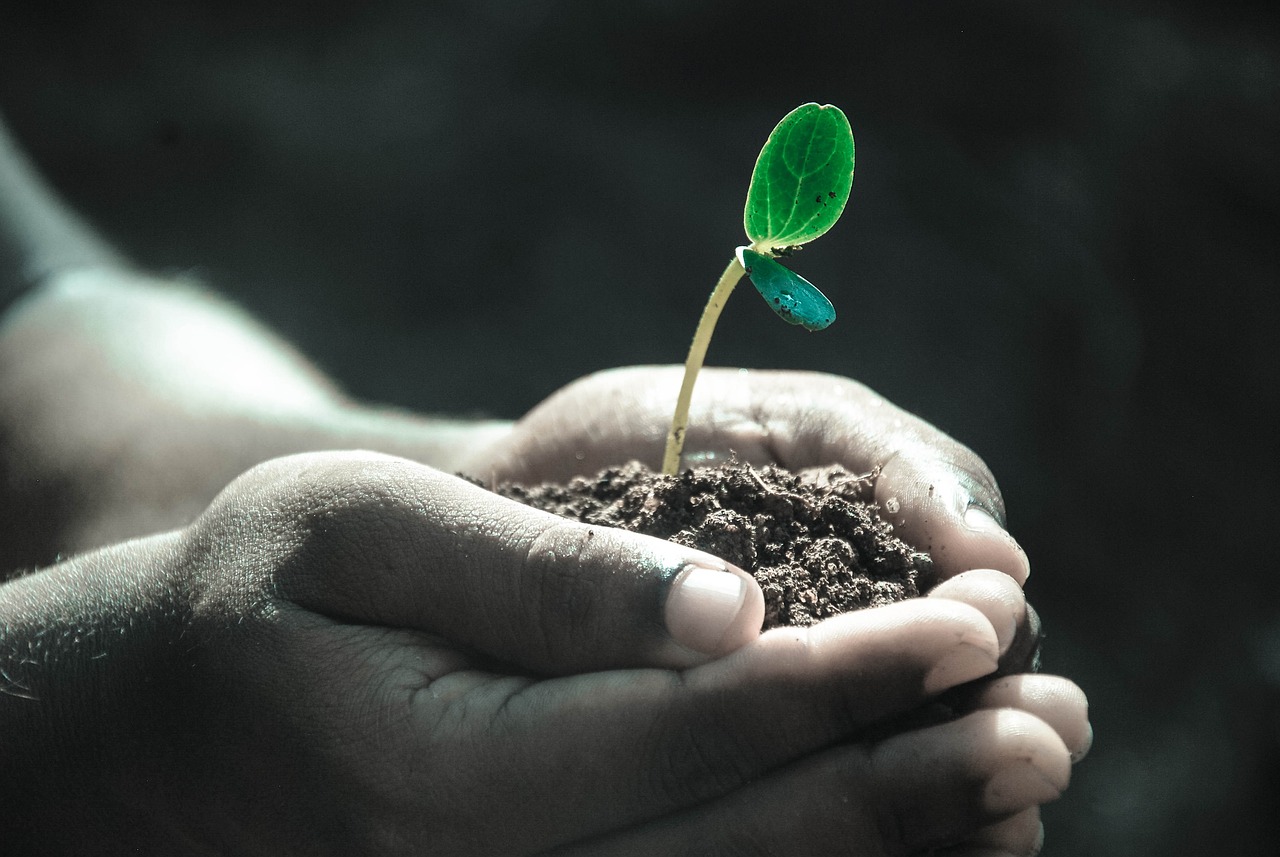
Seed Starting and Transplanting
When it comes to starting chicory from seeds and transplanting seedlings into containers, there are a few key steps to ensure successful growth. Begin by planting chicory seeds indoors in early spring to give them a head start before the growing season. Use a seed-starting mix in small containers, keeping the soil consistently moist but not waterlogged.
Once the chicory seedlings have developed a few true leaves, they are ready to be transplanted into larger containers. Choose containers that are at least 12 inches deep to accommodate chicory's long taproot. Gently remove the seedlings from their starter pots, being careful not to disturb the roots, and plant them at the same depth in the new containers.
After transplanting, water the seedlings thoroughly to help them establish in their new environment. Place the containers in a sunny location to ensure they receive at least 6 hours of sunlight per day. As the seedlings continue to grow, monitor their progress and adjust watering and fertilizing as needed to support healthy development.
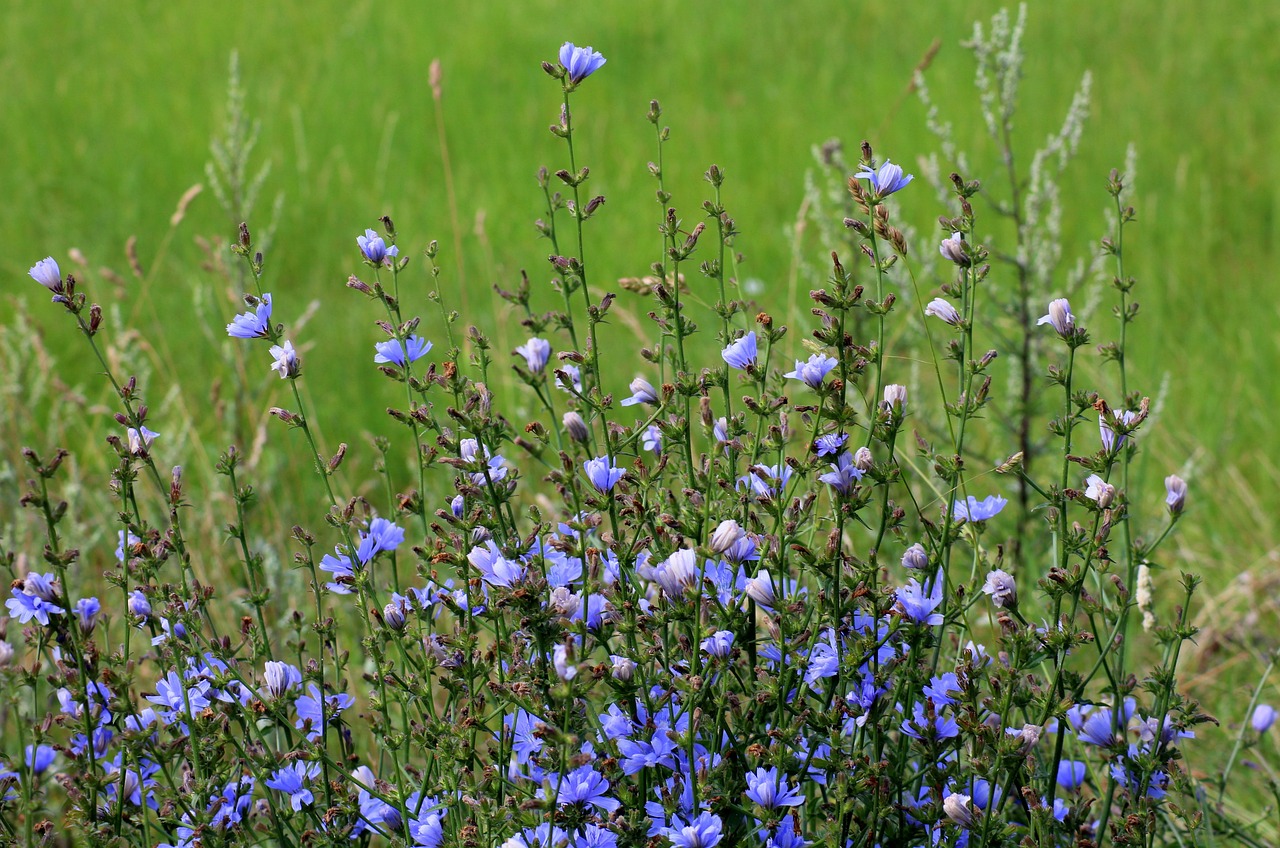
Watering and Fertilizing
When it comes to your chicory plants, striking the right balance is key to ensuring their optimal growth and health. Chicory plants require consistent moisture to thrive, but overwatering can lead to root rot and other issues. It's essential to keep the soil evenly moist, allowing it to dry slightly between waterings to prevent waterlogged conditions.
For fertilizing, a balanced liquid fertilizer can provide the necessary nutrients for chicory plants to flourish. Applying fertilizer every few weeks during the growing season can help promote robust growth and a bountiful harvest. Remember not to over-fertilize, as this can lead to excessive foliage growth at the expense of root development.
One effective method for watering chicory in containers is the bottom-up approach. Placing the containers in a shallow tray filled with water allows the plants to absorb moisture from the bottom, promoting healthy root growth. This technique also helps prevent water splashing on the leaves, reducing the risk of fungal diseases.
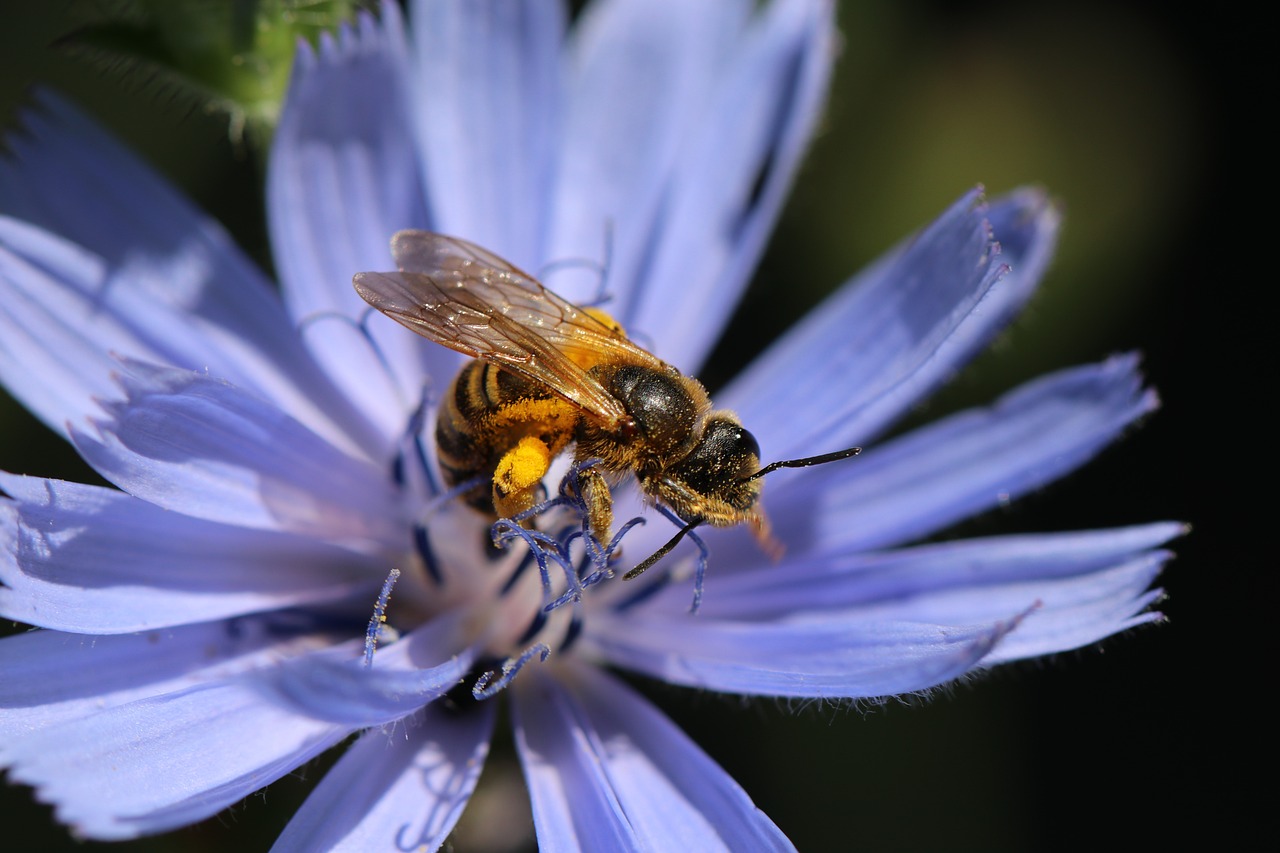
Pest and Disease Management
When it comes to growing chicory in containers, pest and disease management is a crucial aspect to ensure the health and productivity of your plants. Keeping a close eye on your chicory plants and being proactive in addressing any issues that arise can make a significant difference in the success of your container garden.
One common pest that can affect chicory plants is aphids. These small insects feed on the sap of the plant, causing damage to the leaves and stems. To combat aphids, you can introduce natural predators like ladybugs or use insecticidal soap to control their population. Regularly inspecting the undersides of leaves for clusters of aphids can help you catch infestations early.
Another pest to watch out for is slugs, especially in containers where they can easily hide and feed on tender chicory leaves. To deter slugs, you can create physical barriers around your containers using copper tape or diatomaceous earth. Additionally, keeping the area around your containers clean and free of debris can help reduce slug populations.
When it comes to diseases, powdery mildew is a common issue that can affect chicory plants, especially in humid conditions. Powdery mildew appears as a white powdery substance on the leaves and can inhibit growth if left unchecked. To prevent powdery mildew, ensure good air circulation around your plants and avoid overhead watering, which can promote fungal growth. If powdery mildew does appear, you can treat it with fungicidal sprays or neem oil.
Overall, maintaining a healthy growing environment for your chicory plants, including proper watering, adequate sunlight, and good air circulation, can help prevent pest and disease problems. By staying vigilant and addressing issues promptly, you can enjoy a bountiful harvest of fresh and flavorful chicory from your container garden.

Harvesting and Storage
Harvesting chicory is a rewarding task that requires precision and care to ensure the best quality leaves for your culinary creations. When the chicory leaves reach the desired size, it's time to harvest them. Using a sharp pair of scissors or a knife, cut the leaves close to the base of the plant, being careful not to damage the remaining foliage. Harvesting regularly encourages new growth and ensures a fresh and abundant supply of chicory leaves.
Once harvested, it's essential to store chicory properly to maintain its freshness and flavor. To store chicory leaves, gently wash them to remove any dirt or debris, then pat them dry with a clean towel. Place the leaves in a plastic bag or airtight container lined with a paper towel to absorb excess moisture. Store the chicory in the refrigerator crisper drawer, where it can stay fresh for up to a week.
If you prefer a continuous supply of fresh chicory leaves, consider practicing the cut-and-come-again harvesting method. This involves cutting only a portion of the outer leaves, allowing the inner leaves to continue growing. By harvesting in this manner, you can enjoy a steady harvest of tender and flavorful chicory leaves throughout the growing season.
For longer-term storage, consider freezing chicory leaves to preserve their quality. Blanch the leaves in boiling water for a few seconds, then transfer them to an ice bath to stop the cooking process. Once cooled, drain the leaves and pack them into airtight containers or freezer bags. Frozen chicory leaves can be used in soups, stews, and other cooked dishes, retaining their nutritional value and flavor.
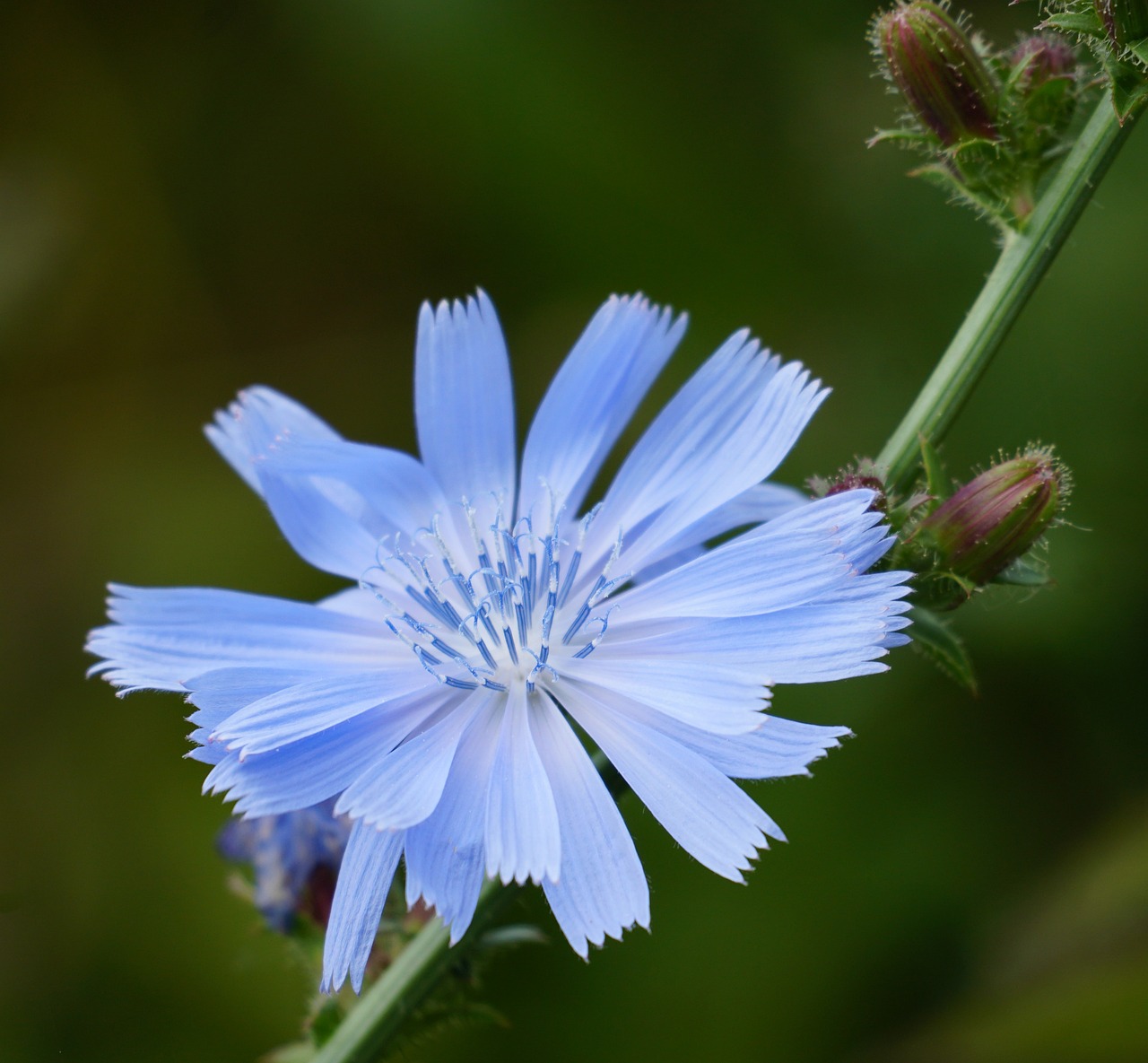
Companion Planting
Companion planting is a clever gardening technique that involves planting different species of plants together to benefit each other. When it comes to growing chicory in containers, companion planting can play a crucial role in maximizing space and promoting plant health. By strategically selecting companion plants, you can create a harmonious environment that deters pests and enhances the growth of your chicory.
One popular companion plant for chicory is radishes. Radishes are known to repel harmful insects like cucumber beetles, which can damage chicory plants. Additionally, radishes have shallow roots that won't compete with chicory's deep taproot, making them ideal container mates. The peppery flavor of radishes also complements the bitterness of chicory leaves in salads.
Carrots are another excellent companion plant for chicory. Carrots have a symbiotic relationship with chicory, as they help break up the soil, making it easier for chicory's taproot to penetrate deeply. The tall, feathery foliage of carrots can also provide shade for chicory during hot summer days, preventing the soil from drying out too quickly.
Onions are a beneficial companion plant for chicory due to their pungent odor, which can help mask the scent of chicory and confuse pests like aphids and carrot flies. Planting onions near chicory can help deter these pests naturally, reducing the need for chemical pesticides. Additionally, onions are shallow-rooted, so they won't compete with chicory for nutrients in the container.
When practicing companion planting with chicory, it's essential to consider the growth habits and compatibility of the plants. Avoid planting species that have conflicting needs or may overshadow the chicory. By carefully selecting companion plants that complement chicory's growth requirements, you can create a thriving container garden that benefits all the plants involved.
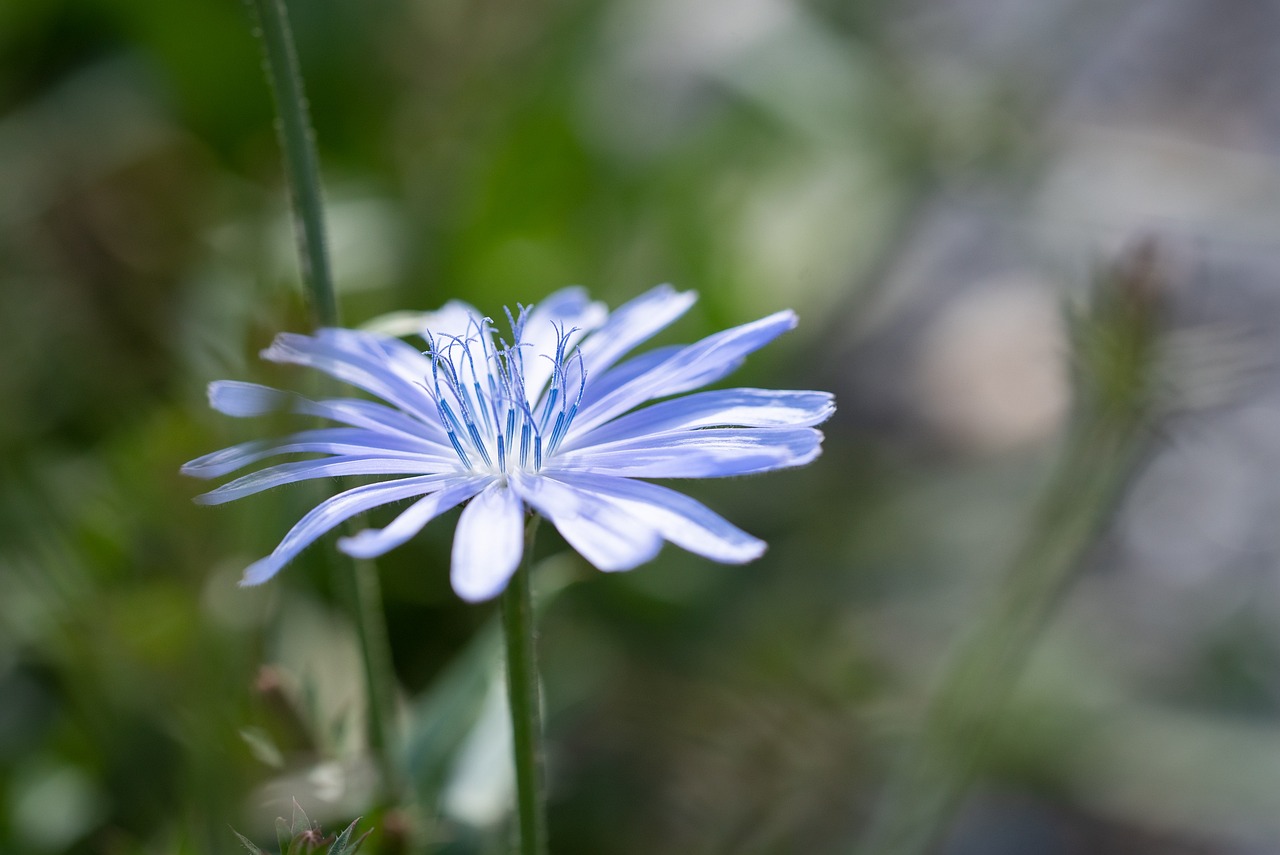
Culinary Uses of Chicory
Chicory is not only a versatile and nutritious plant to grow, but it also offers a wide range of culinary uses that can elevate your dishes to a whole new level. From salads to stir-fries, chicory can add a unique and slightly bitter flavor profile that pairs well with various ingredients.
One popular way to incorporate chicory into your cooking is by using it in salads. Its crisp texture and slightly bitter taste can add a refreshing element to your salad bowl. You can mix chicory leaves with other greens like arugula, spinach, or lettuce for a flavorful and nutritious salad.
Another creative way to use chicory is by incorporating it into stir-fries. The sturdy leaves of chicory can hold up well to high heat, making them a great addition to stir-fried dishes. Pair chicory with vegetables, protein sources like tofu or chicken, and your favorite seasonings for a delicious and healthy meal.
For those looking for a caffeine-free alternative to coffee, roasted chicory roots can be used as a coffee substitute. Roasted chicory roots have a deep, rich flavor that is reminiscent of coffee but without the caffeine. Simply roast the chicory roots until they are dark and fragrant, then grind them to use as a coffee alternative.
Additionally, chicory can be used in soups, stews, and even as a topping for pizzas and flatbreads. Its versatility allows you to experiment with different cooking methods and flavor combinations to discover new and exciting ways to enjoy this nutritious plant.
Frequently Asked Questions
- Can chicory be grown indoors in containers?
Yes, chicory can be successfully grown indoors in containers as long as they receive adequate sunlight and proper care. Choose a sunny spot near a window or use grow lights to provide sufficient light for the plants.
- How often should chicory be watered?
Chicory plants should be watered regularly to keep the soil consistently moist, but not waterlogged. It is essential to monitor the moisture levels in the soil and adjust the watering frequency based on the plant's needs and environmental conditions.
- What are some common pests and diseases that affect chicory?
Common pests that can affect chicory include aphids, slugs, and caterpillars. Diseases such as powdery mildew and leaf spot can also impact chicory plants. Regularly inspecting the plants and taking preventive measures can help manage these issues.
- Is companion planting beneficial for growing chicory?
Yes, companion planting with plants like radishes, carrots, and onions can benefit chicory by maximizing space, enhancing soil health, and naturally deterring pests. This symbiotic relationship between plants can create a more balanced and diverse growing environment.
- How can chicory be used in cooking?
Chicory leaves can be used in a variety of culinary dishes, including salads, stir-fries, and soups. Additionally, roasted chicory roots can be ground and used as a coffee substitute, providing a rich and earthy flavor to beverages.



















